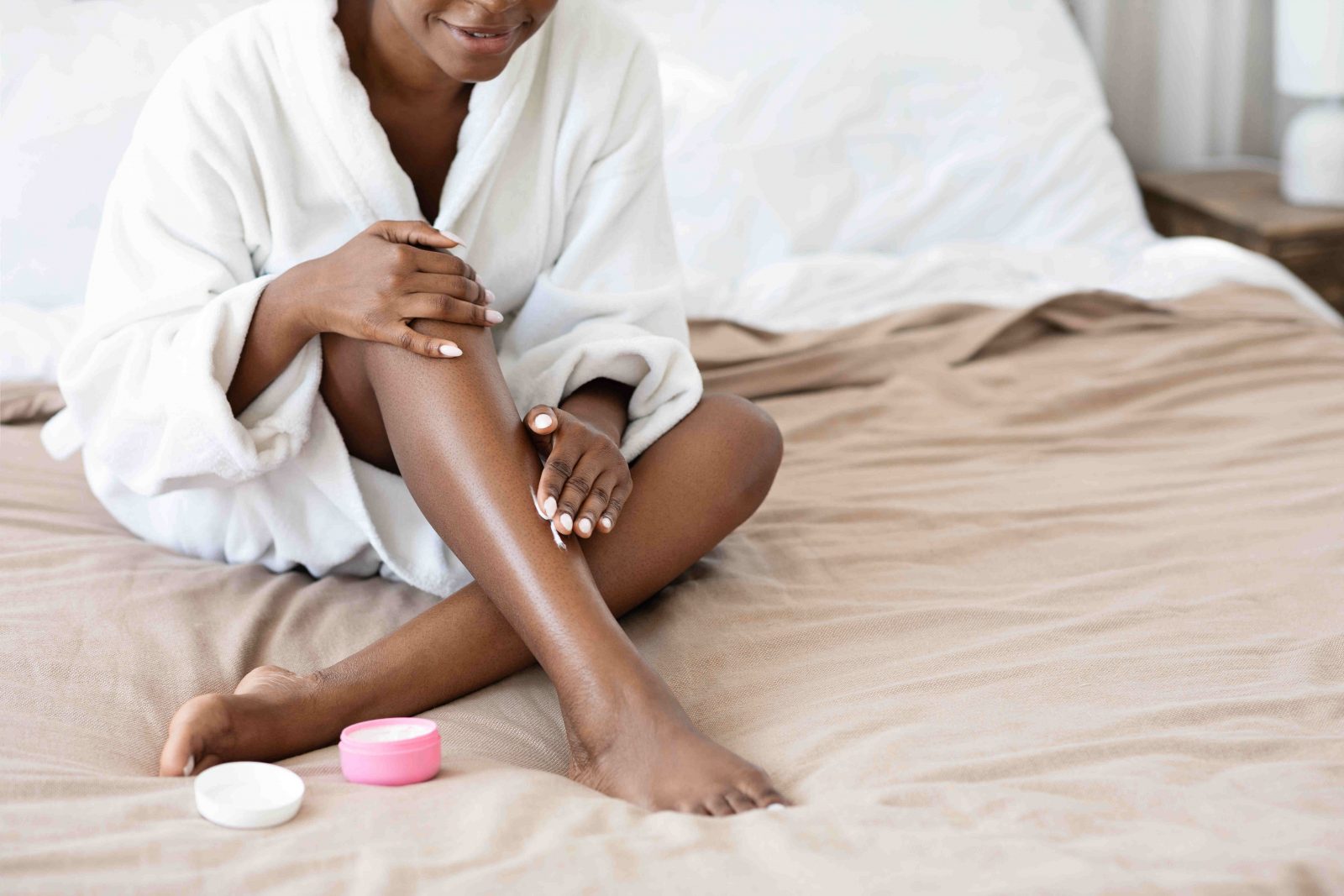 Photo Credit: Shutterstock
Photo Credit: Shutterstock
When it comes to healthy, vibrant, and radiant skin, our faces and anti-aging products in particular usually take up our utmost concern and subsequent energy, but with our skin being our largest organ and covering far more territory than just our facial features, cognizance of and effort toward complete dermal health should always be a priority. Our epidermis layer serves the human body in a plethora of ways, it functions as a barrier that protects us from outside microbes and weather impacts, retains and regulates our stable bodily temperature, and ensures that we can feel sensations of touch, heat, and cold. With all that our skin does for us, it most definitely deserves to be cared for and protected in return. Unfortunately, genetic aspects, weather conditions, and improper regimen can all take an evident negative toll on our once soft and supple skin leading us to believe that our dermal disturbances and discomforts are insurmountable; with the proper routine and topical care treatments and techniques, you’ll be able to care for your skin as effectively as it cares for you. Read on to discover the top five most common non-facial skin-related troubles and their remedies.
1. Eczema And Dry Skin Patches
Summer is the proclaimed favorite season of many, with the warm weather it brings and the dynamic energy it evokes, but the extra humidity in the air and the spirit of summer cannot last forever. As much as we sometimes wish that we could stop the interminable turn of time this is truly impossible. Unfortunately for many, phenomenal fall hues and the ensuing winter wonderland, though beautiful, bring dreaded dry skin patches and irritating heightened eczema symptoms. For those suffering from eczema, the winter months can seem like a dreary and endless nightmare. Eczema is a genetic and heritable condition that affects the skin's ability to protect the body from environmental irritants and allergens and retain enough moisture, ultimately yielding to itchy and severely dry, angry skin. Through the use of certain, often thick, topical creams and treatments, the skin can be helped to maintain mandatory moisture through the bitter wintry months. Calming inflammatory itchy patches of skin can be accomplished through a calculated regimen consisting of certain Eczema-labeled barrier creams, balms, and ointments often sold over the counter. Dermatologist-recommended brands include CeraVe, Aveeno, Cetaphil, and Eucerin. Additionally, an oatmeal bath, though unconventional, can be extremely beneficial and effective in reducing eczema symptoms. Oatmeal is classified as an emollient, meaning that it retains moisture against the skin. Oatmeal is also anti-inflammatory and will serve to reduce eczema-prone itching. It is also important to note that for some sufferers, food allergies may play a role in causing eczema, and should therefore be outlined and avoided. Finally, avoiding traditional soaps which further strip the skin of moisture, and the application of antihistamine and topical antiseptic creams to reduce allergic reactions and destroy dermal microorganisms is recommended to manage intense symptoms.
2. Strawberry Legs
Strawberry legs serve as an umbrella term for various skin issues yielding one common result: uncomfortable and dotted skin on the leg area. As aforementioned, strawberry legs can arise due to many factors, such as improper shaving techniques, overly dry skin, clogged pores, folliculitis, and/or keratosis pilaris. Essentially, all of these conditions relate to large pores and open, infected, and oxidized hair follicles. To prevent this type of situation, depending on the severity of the condition, treatments can be done at home or by a licensed professional. Treatments can begin with proper shaving, with the application of shaving cream and ideal moisturizers, as well as the use of an epilator, which is a small electrical tool that grasps and removes hair by the root. An epilator can prevent strawberry legs without causing trauma to the skin.
3. Darker Underarms
Underarms should be about the same coloration as the rest of the body though sometimes, dermal darkening of areas such as the underarms can occur. This discoloration and hyperpigmentation are often due to a skin condition known as acanthosis nigricans. This condition is more common in individuals who have a darker complexion, to begin with, and those with hormonal imbalances or struggles can also be at risk. Acanthosis nigricans can increase pigmentation in various folds throughout the body. Fortunately, this condition does not yield physical discomfort but this could cause embarrassment, if embarrassment ensues, home remedies and medical treatment creams can be applied. Retinoid cream or pills can be used to effectively lighten a darkened area, as well as chemical peels, which strip away upper layers of darkened skin, dermabrasion, which resurfaces the skin, and finally, an increase in vitamin D intake can solve these hyperpigmentation problems. Home remedies such as the use of sea cucumber extracts can also significantly help to lighten the skin.
4. Scarring
Though reminiscent of our past triumphs and tribulations, scars can be unwanted and ruin our otherwise flawless-finish skin. For many individuals, scarring can bring forth much undesirable attention, questions, and ultimately, insecurity. Fortunately, scar removal remedies are abundant, and there are both topical treatments and minimally invasive procedures that promise to effectively lighten these unwelcome scars. Laser scar removal is the first and most effective method of eliminating scarring. With laser scar removal, oftentimes three to five treatments are necessary, but the pain is minimal and the results are evident and lasting. Additionally, skin resurfacing chemical peel technology and microdermabrasion and regular dermabrasion can yield desired results. Topical creams such as retinoid or creams including high silicon percentages can be used to vanish bothersome scars.
5. Body Acne
Acne is arguably the most commonly tackled skin-related issue for individuals who are in the 18-30-year-old age range. Unfortunately, painful and irritated acne cysts can plague various areas throughout the body, and often do, as opposed to solely impacting the face. Body acne can take more than just extra scrubbing to get rid of, especially if the acne cause is hormonal which can be very likely. In terms of ameliorating uncomfortable acne breakouts, a combination of prescription medications alongside topical solutions seems to be the most effective answer. Medications such as spironolactone, which blocks the hormone aldosterone from existing readily in the body can solve acne concerns especially in conjunction with salicylic acid serums and washes and/or retinoid topical cream treatments.























